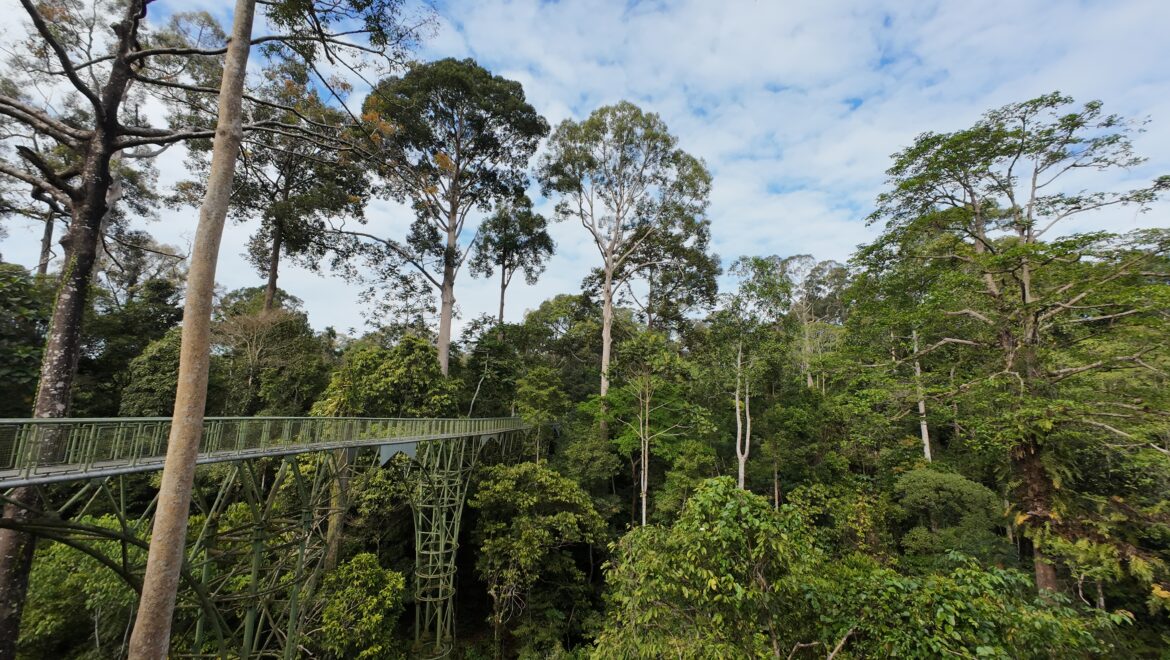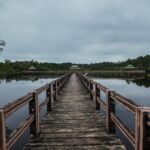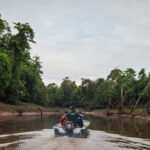Sepilok, located in the Malaysian state of Sabah on the island of Borneo, is renowned primarily for the Orangutan Rehabilitation Centre and hiking opportunities at the Rainforest Discovery Centre.
How to get to Sepilok?
Getting to Sepilok typically involves travelling to Sandakan, a city in the Malaysian state of Sabah on the island of Borneo.
By Air
Several airlines operate flights to Sandakan, including Malaysia Airlines and AirAsia, with direct flights available from Kota Kinabalu (the capital of Sabah) and Kuala Lumpur (the capital of Malaysia). To get from Sandakan Airport to Sepilok the best way is to use the ride-hailing service, Grab.
By Land
There are bus services from Kota Kinabalu to Sandakan passing through Kundasang and Sepilok. The journey takes about 6-8 hours. Ask the driver to drop you off at Sepilok.
Alternatively, you can also rent a scooter in Sandakan and just ride to Sepilok for a day trip which is exactly what I did.
For ticket booking, visit Easybook or 12Go.Asia
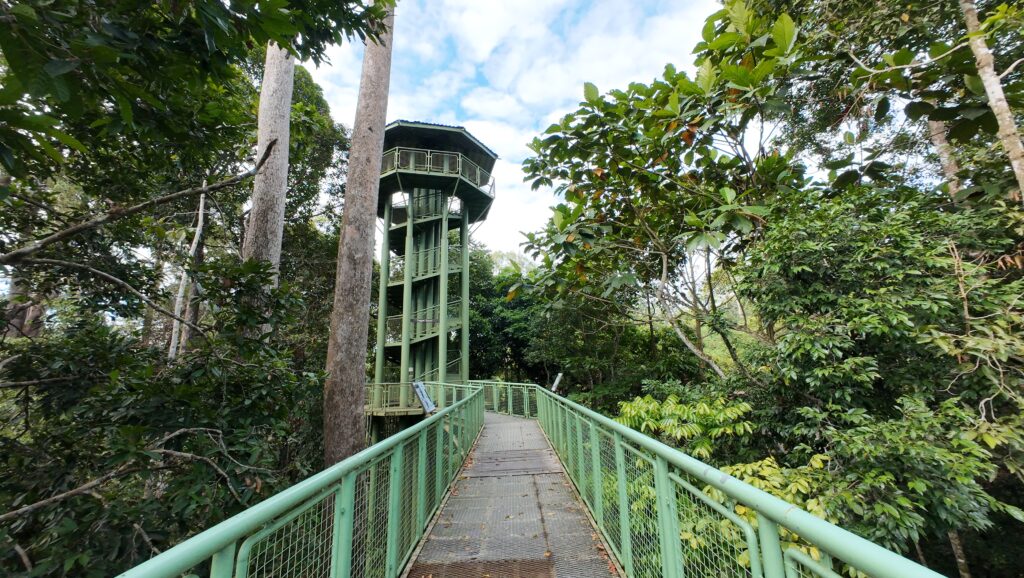
When to go?
The best time to visit Sepilok is during the dry season, which typically falls between March and October. The weather during these months is generally more favourable with less rainfall, making it easier to explore the rainforest (the trails are less muddy) and enjoy outdoor activities.
How long to stay?
It depends if you are planning to hike the Kabili Trail within the Rainforest Discovery Centre. If yes, it will take you a minimum of 5-6 hours and you won’t be able to fit much more into your daily schedule. Therefore, I would plan 2 days in the Sepilok area to comfortably visit the rest of the sights on the second day.
If you don’t plan to hike the Kabili Trail, then one full day is perfectly enough.
How to get around?
Three major sites are located very close to each other, within walking distance: Bornean Sun Bear Conservation Centre, Sepilok Orang Utan Sanctuary and Rainforest Discovery Centre.
To get to Labuk Bay Proboscis Monkey Sanctuary you will need a taxi or a rented scooter. Inquire at your accommodation or check on the mobile app – Grab.
What to do in Sepilok?
Bornean Sun Bear Conservation Centre
The sun bear, the smallest bear species worldwide, gets its name from the golden band of fur that encircles their necks. Sun bears can be found in Borneo, eastern India, southern China, Myanmar, Laos, and Vietnam, among other parts of Southeast Asia. With their large claws, they can easily climb tall trees in pursuit of beehives. Additionally, they manage the damaging termite population in the forest, which is an essential component of the bears’ diet.
They are the second most endangered bear species in the world and the centre takes good care of them. Before being released into the wild, a new newcomer will learn how to forage, make nests, climb, and interact with others. The gift shop plays a film that educates customers about the important work of the centre.
The entrance ticket costs 50 RMB for non-Malaysians and 10 RMB for Malaysian adults.
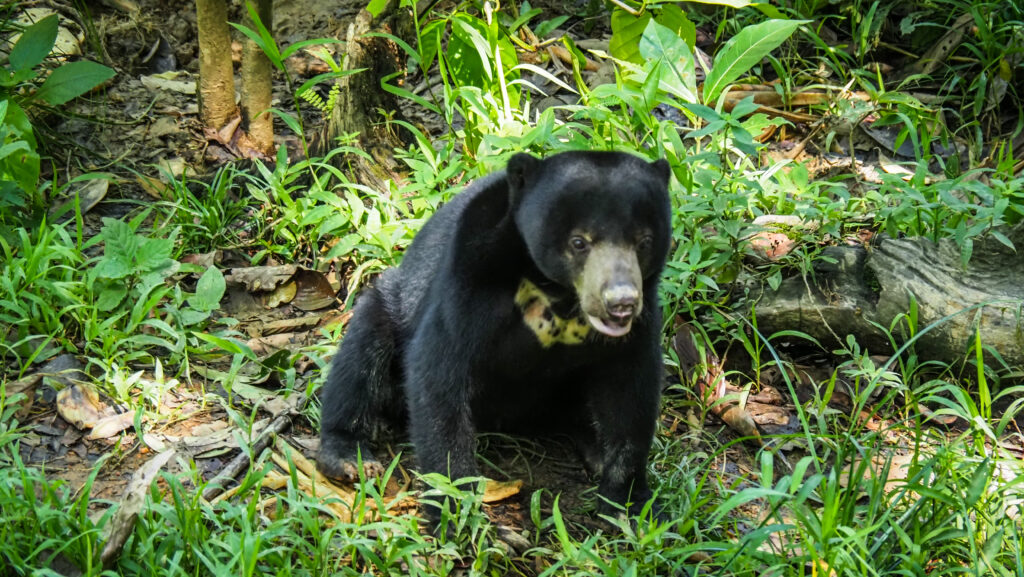
Sepilok Orangutan Sanctuary
The Sepilok Orangutan Rehabilitation Centre was established in 1964 by Barbara Harrison, an Englishwoman, who worked in collaboration with the government of Sabah. The centre was founded to rehabilitate orphaned and injured orangutans so they could eventually return to the wild.
Initially, the centre focused on rescuing young orangutans who were displaced due to logging, deforestation, and illegal pet trade. The early years involved significant efforts in raising awareness and educating the public about the plight of orangutans. Over the years, the rehabilitation process at Sepilok has evolved. Young orangutans are taught essential survival skills, including climbing and foraging, in a safe and controlled environment before they are gradually released into the forest.
Feedings at the platforms are at 10 AM and 3 PM, and last 30 to 50 minutes. Tickets are valid for one day, so you can see two feedings with the same ticket. I visited in the morning and the place was extremely crowded with people which took away most of the charm of this place. I felt like I was in some kind of a zoo…
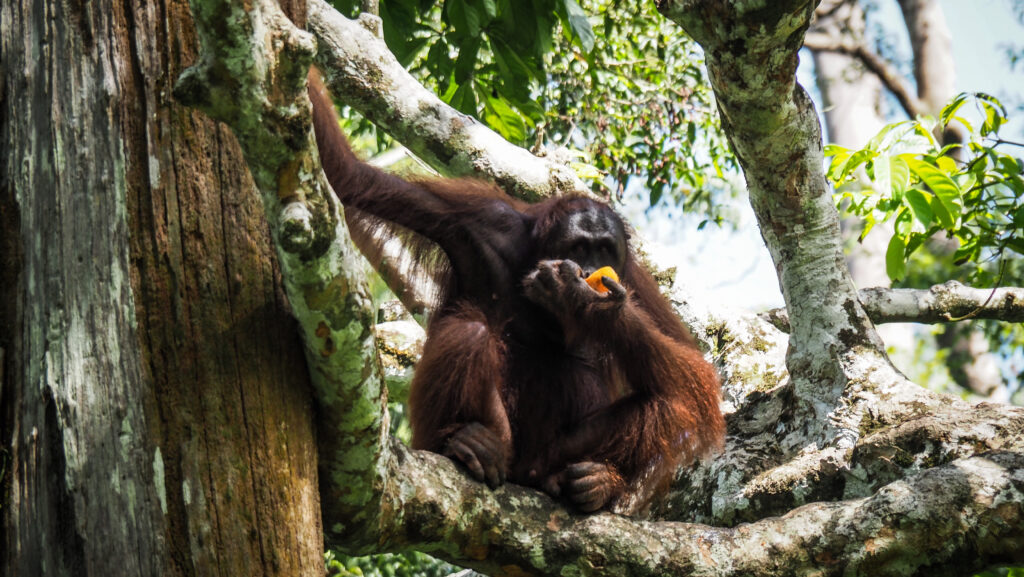
Rainforest Discovery Centre
In addition to eight canopy towers connected by walkways that offer you a bird’s-eye view of the treetops, there are many gentle walking routes. Get a map at the ticket office. Join a night walk for increased chances of spotting tarsiers, slow loris, civets, flying squirrels, and other nocturnal creatures.
Regarding the trails, a Forest Reserve Entry Permit is needed for the 16-kilometre round-trip Kabili Trail. You can easily get it at the ticket office for 35 RMB. The main difficulty of the trail is weather humidity and high temperature, so take plenty of water on you and some clothes for change. In May there weren’t any leeches. Along the path, there are three shelters where you can take a rest. The trail is well marked and in my opinion, there is no need for a guide but they can be hired if needed.
The Sepilok Laut Reception Centre at the end of the trail is reached by walking for 1 km on a boardwalk through the mangrove. You can even spend a night there but need to plan it up front and bring enough water and food. Alternatively, it is possible to arrange a boat pick-up from the centre to Sandakan, but you have to do it a couple of days in advance. Otherwise, you just have to do the trail as an out-and-back day trip.

Labuk Bay Proboscis Monkey Sanctuary
The Labuk Bay Proboscis Monkey Sanctuary is situated inside an oil palm field. The 400-acre property was set to be cleared for the development of oil palm in the mid-1990s when the owner learned that proboscis monkeys were residing in the mangrove forest. He chose to keep this little area of woodland intact as a monkey refuge.
Labuk Bay’s environment is fragmented, with small areas of mangrove forest encircled by plantations. The monkeys are fed extra food because there isn’t enough of it. Somehow I had the feeling that the story of this place fits very well with the general story of Borneo and the fact that wild animals are pushed out of their natural habitats and can only survive on those small, controlled sections… just as a tourist attraction to generate money. That’s why after visiting Sepilok Orangutan Sanctuary and Bornean Sun Bear Conservation Centre, I felt quite depressed and decided not to come here. I hoped to see proboscis monkeys truly wild, but maybe I was too naive.
This privately run sanctuary has two observation platforms. Feeding takes place at Platform A at 9.30 AM and 2.30 PM and at Platform B at 11.30 AM and 4.30 PM. At most feeding times groups of proboscis monkeys descend from the nearby forest and mangroves and head to the wooden platform for a free meal.

